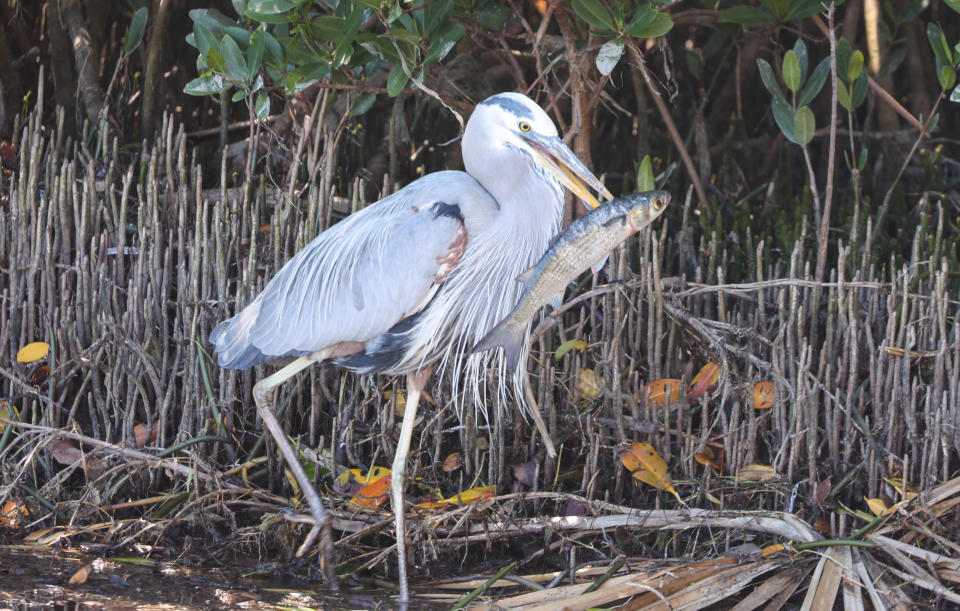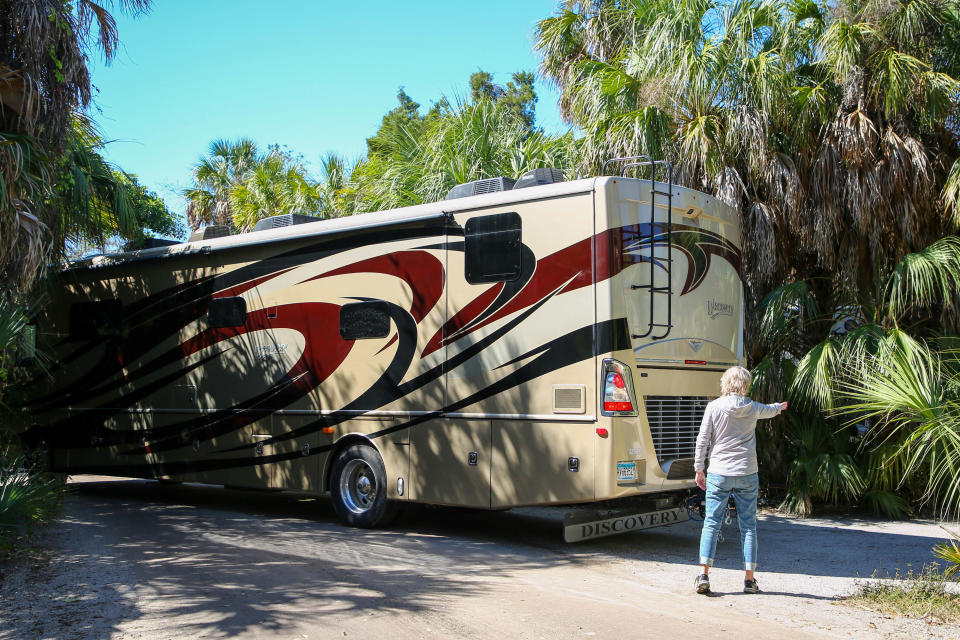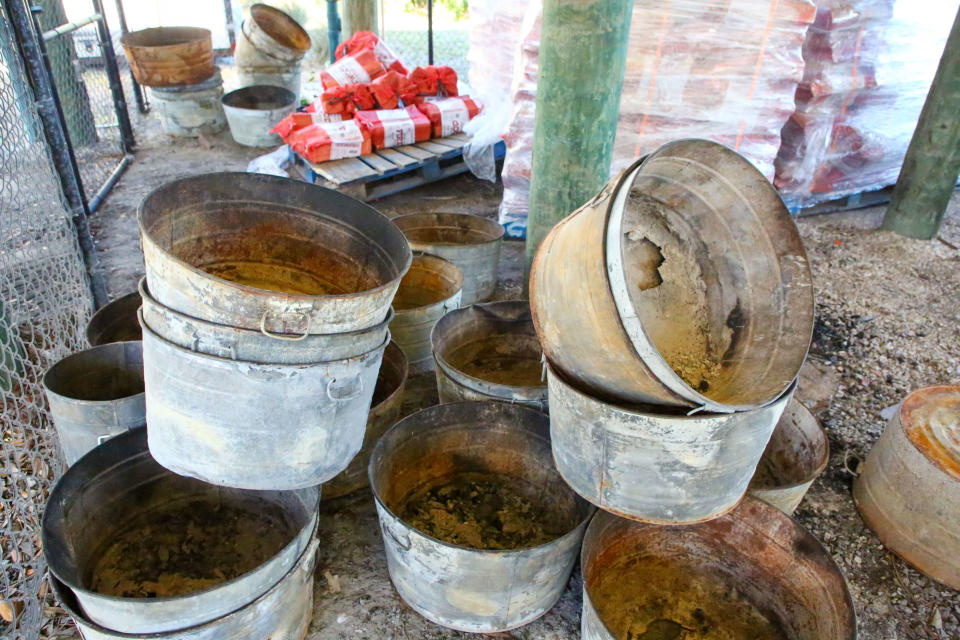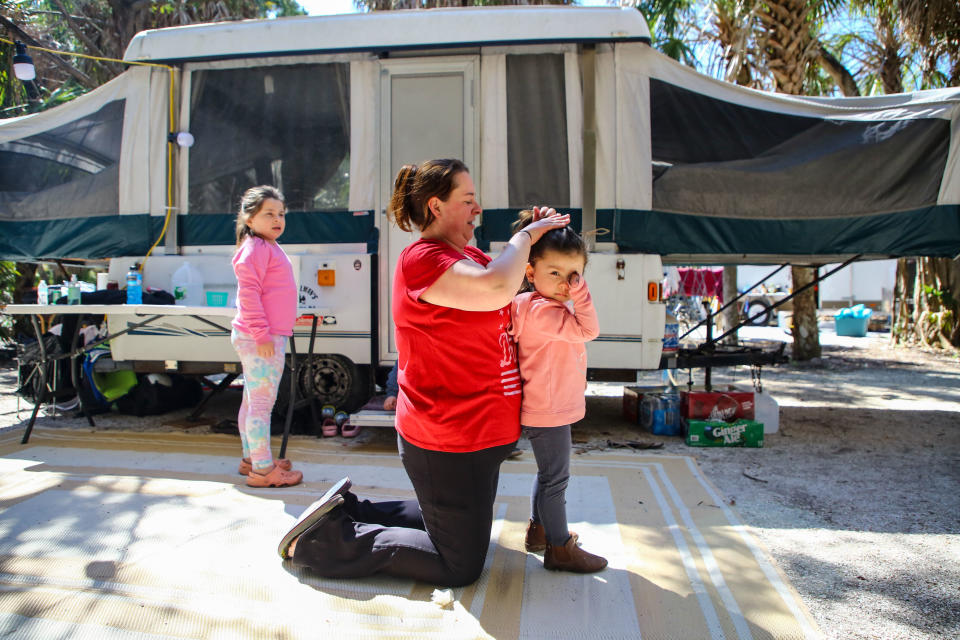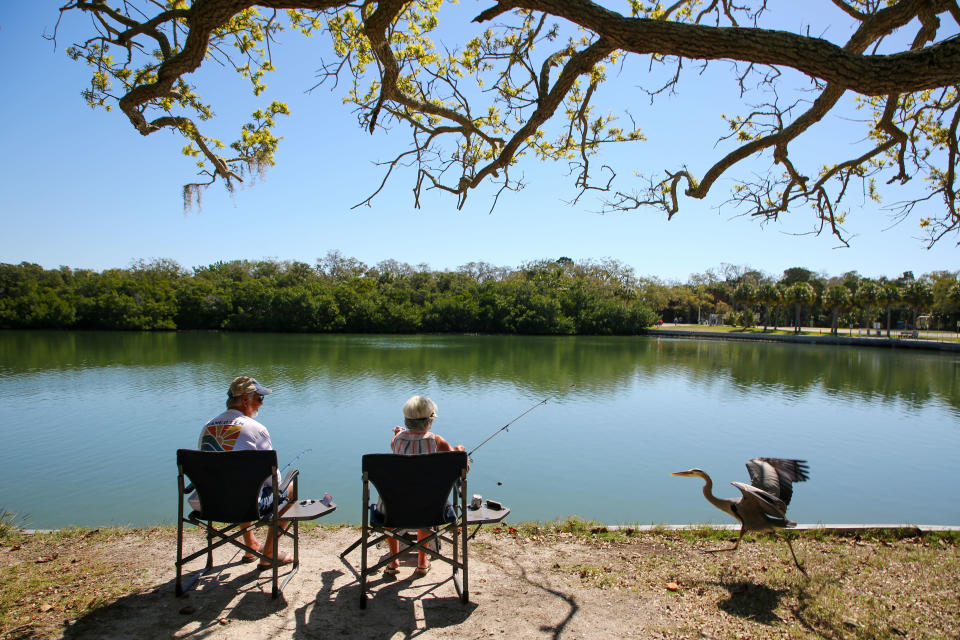Camping at Fort De Soto: What to know about the quirks and perks
At Pinellas County’s Fort De Soto Park campgrounds, the busy season is really more than one season: It starts around Thanksgiving weekend, spans the entire winter and lasts well into the spring.
“Basically when the weather’s nice and not mosquito-y,” said Anna Yu, who’s been a park ranger there for four years.
Fort De Soto, with its beaches, hiking trails, historic military structures and diverse wildlife, is enormously popular (the pages for the park and for camping information are among the four most-visited on Pinellas County’s website). And spots at the 236-site campground, nestled among mangroves a few minutes’ drive from the rest of the park, are coveted, especially this time of year. Yu’s best advice is to book one as soon as possible: seven months out for Pinellas residents, six for every one else.
Once a site is secured, there are a few things campers should know about the quirks of camping at Fort De Soto. Some are included on Pinellas County’s website and in the booking process, but might be missed by those who don’t read the fine print — or just forgot in the months between booking and camping.
And then there are the raccoons.
The fire rings
... or lack thereof. Unlike many campgrounds, including most campsites within the Florida State Parks system, county-run Fort De Soto does not provide campers with a place to build traditional campfires. Its campsites do have elevated grills, but those looking for a more classic experience have two options: rent a fire ring from the camp store, which is run by a private vendor, or bring their own.
The park doesn’t allow ground fires, and any pits brought from home must be true containers with bottoms, such as a portable fireplace or modified 55-gallon drum. Yu said that’s for reasons of both safety — the area between campsites is full of vegetation, including dry palm fronds that could allow a fire to get out of hand quickly — and maintenance.
“If everybody had a ground fire on their site night after night after night, eventually that area is not going to stay localized to one spot, it’s going to spread and degrade the site and ruin it,” she said.
Yu said she didn’t know why fire rings have never been installed at the park. It’s likely not because of any extra work it would create for park staff, who have to clean the grills regularly anyway.
“It might just be that the sites were built decades ago, and they just didn’t put them in then and didn’t feel like adding them later,” she said.
The loops
Fort De Soto’s campground has three sections, and those booking sites should take care to note which one they choose. One is only available for tent camping and smaller vehicles; Yu said it’s popular among van-lifers. The campground’s other two loops allow for all manner of camping setups, but the middle loop is the only one of the three that allows pets.
The raccoons
Living alongside wildlife is part of the deal with any camping trip, but Yu said campers are sometimes surprised by just how brazen Fort De Soto’s raccoons are: She recalled one incident in which a group of them stole a camper’s 3-pound bag of silverware and stashed it in a palm tree. They’re also active during the day, which Yu said leads many out-of-state visitors to believe they’re sick. In reality, she said, they’re just conditioned to snatch food at all hours of the day.
“We’re camping in their natural habitat,” she said. “The main thing we tell people is to never leave food out. Even if you’re at the site doing something off to the side and you have a bag of food laying on the picnic table, that needs to go in a cooler, and even better if you can put the cooler in your car. These raccoons are smart.”
The campers who complain most about raccoons are often the ones provoking the problem, Yu said. But whether these critters are a cute feature of the campground or a necessary evil depends on whom you ask.
“I’ve camped all around FL and I consider this the best camping in FL,” Sandy Cope Brennan wrote in a comment in the Best of Fort DeSoto Park Facebook group. “The racoons are the worst part.”
In the same group, Sara M Staffen Joggerst, who said her family had visited Fort De Soto from Missouri many times, was more amused by their antics.
“The raccoon families in the palm trees really did not bother us,” Joggerst wrote. “We could here them at times jumping from palm tree to palm tree.”
... and other assorted animals
In the Facebook group, campers chatted about other animals they’d encountered at the campground, from rats (frustrating) to lizards (charming).
“The water sites and all the wildlife is amazing,” wrote Cynthia Dutton, who travels to the park from New Jersey annually. “Last year a dolphin actually came up to my husband and was playing in front of him.”
And there are the birds, which Yu said are the main draw for many regular campers. Fort De Soto’s fragile coastal ecosystem supports more than a dozen rare shorebirds, she noted, as well as much other avian life, including her favorite, the American kestrel.
Working at the park can make such sights mundane, she said, but “you have to give yourself reality checks every once in a while: People travel from all over the world to come here just to see these birds.”
